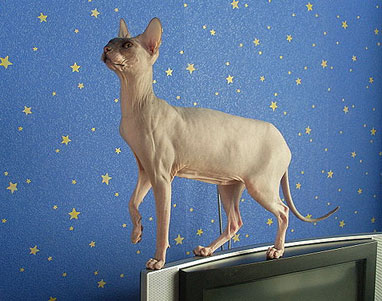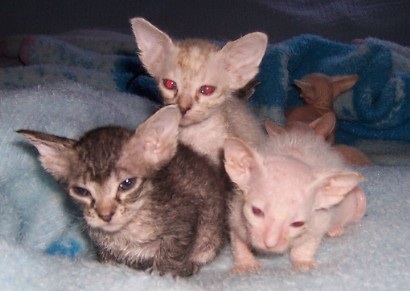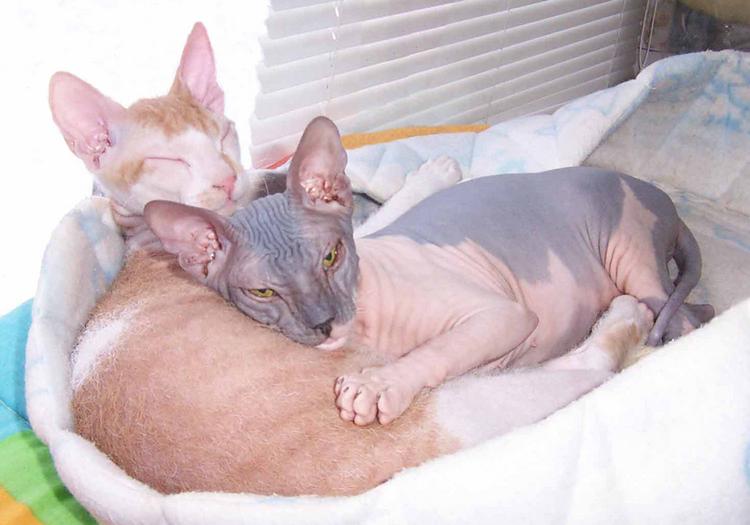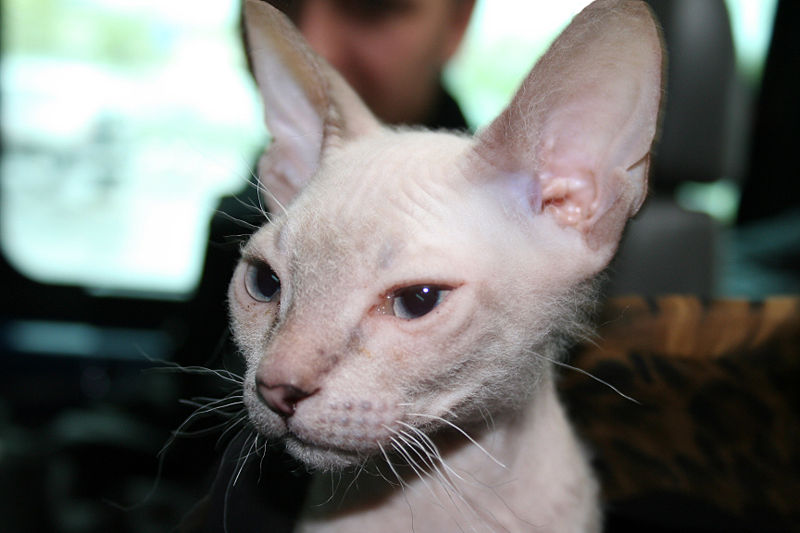



|
Donskoy Description
The Donskoy is one of the hairless breeds. Hailing from Russia, this breed comes in four coat types and a variety of colors. Of the four coat types, three are considered hairless. The Rubber Bald Donskoy is completely hairless at birth and remains so throughout the life of the cat. The Flock coat Donskoy appears completely hairless, but is covered with soft, downy fur that gives the cat the feeling of chamois. A Velour-coated Donskoy is often born completely bald or with a small bald patch on the head known as a Monk's cap. They have a wool-like coat that becomes wiry and disappears within the first year; some may retain a little hair while others become completely bald over time. The Brush coat Donskoy retains most of its coat, with bald areas on the head, upper neck and back. This breed is unique from other "hairless" cats in that it will grow a coat in cold weather that it then sheds in the warmer summer months.
Medium in size with a modified wedge head, the Donskoy is a medium to medium long feeling full of grace. The ears are large and wide at the base, set upright and tilted slightly forward. Eyes are medium to large in size and should be in proportion with the head. The body is dense and muscular, strong boned and wide breasted. The abdomen should be well-rounded, something of a pot belly but not fat. This is a medium boned cat, not delicate. Legs should be in proportion to the body, with the hind legs slightly longer than the front ending in medium sized, oval paws with long, slender toes. Pads should be thick and cushion like giving the cat the appearance of walking on clouds. Skin should be elastic and excessive with pronounced wrinkles.
Donskoy Temperament
Soft-hearted and sociable, the Donskoy will quickly steal your heart. Outlandish in appearance, this is an incredibly active, extremely friendly, very intelligent and highly good natured breed. They love to cuddle and be held, are well balanced in personality, and express constant interest in their surroundings. With childlike curiosity, a Donskoy will keep you entertained for hours as they explore and play. They are excellent with other animals, but will become lonely. This breed is highly devoted to its family and should not be left alone for long periods of time without a companion. They can be easily trained to follow voice commands and love to be with their people.
Donskoy Care
Care should always be taken with hairless breeds to keep them safe from sunburn. The Donskoy will grow a coat in the colder months so less concern is needed. Owners looking to purchase a hypoallergenic cat should be aware that no cat is truly hypoallergenic as the allergen found in their saliva is still present. Donskoy have few grooming needs, are easy natured and have no special nutritional requirements. When purchasing from a breeder care should always be taken to inquire about any genetic and hereditary diseases and disorders and your kitten should be examined by your veterinarian before purchasing.
Donskoy History
A proud Russian breed, the Donskoy hailes from the city of Rostov-on- Don. They were discovered in 1987 by Elena Kovaleva who rescued a small female kitten. This kitten, named Varvara, grew up and lost her coat over time, a condition for which she was treated in vain. A few years later she birthed a litter of fully coated and completely bald kittens. Those with fur began to lose their hair like their mother. The breed was almost completely eliminated when Irina Nemikina rescued one from destruction and began to breed them, creating the Don-Sphnyx. The name Donskoy was given to the breed when it was accepted into consideration by TICA.
|